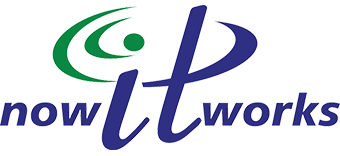- How does upgrading legacy technology involve more than installing new hardware and software?
- Can an upgrade slow your business down and what can you do to fix it?
What is Legacy Technology?
Legacy technology is outdated technology that still “works.” Many small business owners think of it as outdated hardware and software—computers, servers, printers, programs, etc. In fact, it encompasses more than that, including an old way of doing things. When we say things such as, “I’ve always done it that way,” or “I’m used to doing it that way,” we get a false-negative impression of our new technology. Still, we’ve all been there, including our own clients. Which presents a good learning opportunity.
New Systems Ran Slower Than Legacy Technology
Charter Oak Manufacturing (COM), a family-owned organization, ran their legacy hardware for too long. After prioritizing with Now IT Works, they finally took the plunge and purchased new computers, new internet security, wireless for their office and shop, and a new cloud-based file system.
Like most manufacturing firms, they didn’t have time to deal with slowdowns. That was one reason that they hadn’t upgraded sooner. However, once the legacy technology began to disrupt daily operations, they needed to focus on efficiency and speed.
After we installed their new hardware, we allowed them time to get accustomed to the new Windows interface. Then, we upgraded file management to the cloud. We migrated 15 years of data—PDFs, schematics, invoices, payroll records, and other critical information. Once we finished the migration, we showed the COM team their new data interface, including the top 5 to-dos.
However, a month after the migration, Donna, the COO at COM, encountered an issue, which caused them some pain despite our efforts. Accessing their files was much slower than expected.
What Caused the Problem?
We knew this shouldn’t happen. Luckily, we discovered the issue quickly. Before upgrading, COM used the built-in Windows file search feature to locate data. This program worked well because Windows had already indexed every file stored on their computers. This enabled super quick search results (think Google searches).
But their new cloud-based file system had its own internal search function (like Google’s) that only works well when you use it. Because COMs files were now stored in the cloud, the built-in Windows file search slowed searching and retrieval.
The folks at COM had meshed their new technology with an old process. That caused delays when looking for data.
When we explained this to Donna, the COO, she said “It just doesn’t sit well with me that our new systems would operate so slow.” While it would have been ideal for Donna to change her mindset, we knew that we could help smooth the transition further. After understanding her process, we applied a few new configurations that allowed Windows to index some of her data. That way Donna could get the best of both worlds.
The Takeaway
Normally, when we buy new technology, we need to buy into it fully. Using an outdated tool that was not designed for the intended purpose will only cause pain—personal frustration and organizational suffering.
In this case, Donna did the right thing by communicating her frustration to us (her managed services provider) quickly. That way we could ease the transition process for her and the COM team.
By the way, after adopting the new technology, Donna reports, “I can’t imagine going back to our old system. I could never find the file I was looking for and now it’s super easy.”
Learn more about how Now IT Works upgrades your technology, today.

